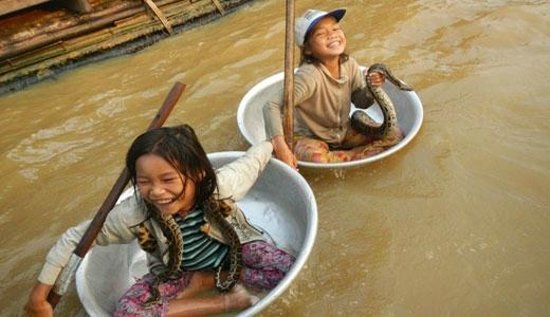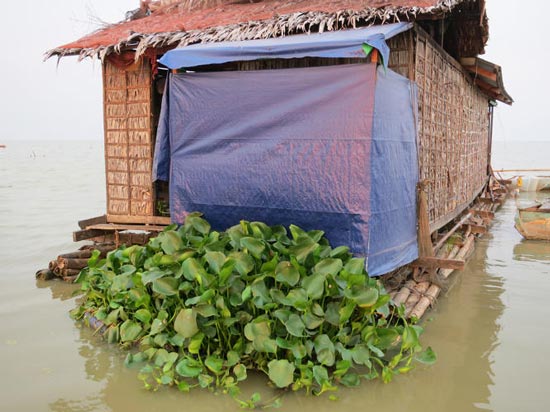For those who believe that life is full of lo and behold moments, well, here is one for you – imagine living on water!
Such is life in the world’s floating villages found in India, Indonesia, Thailand, Cambodia, Vietnam and on the Amazon. Floating villages comprise of homes, local markets, schools, churches, temples, business establishments – all on stilts, wooden platforms and floating rafters.
The floating villages in Cambodia have become very popular with tourists in recent years.
FLOATING VILLAGES IN PHOTOS
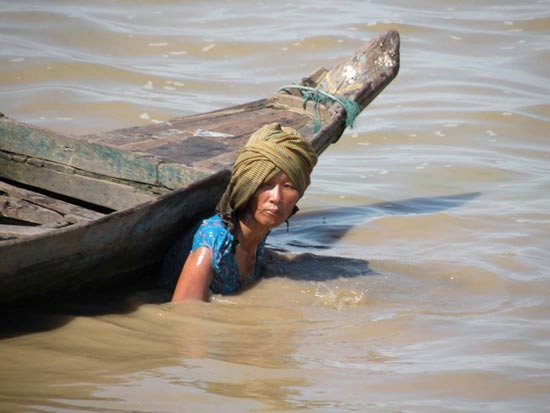
Cambodia’s floating villages are inhabited by families who pass down this way of life to younger generations.
Many of the inhabitants of Cambodia’s floating villages are fishermen. A high percentage of them are of Vietnamese descent.
In these floating villages, water levels which are generally low during the dry months (averaging 3 feet) rise in the rainy season (June to October), to sometimes dangerous levels.
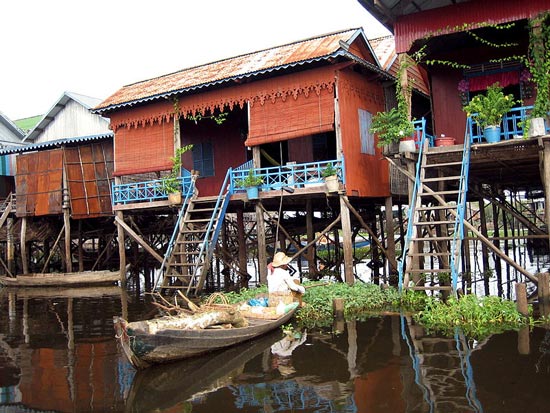
Tonle Sap, the largest freshwater lake in South East Asia, houses a floating village.
Tonle Sap is one of the most productive inland fisheries in the world… some three million people depend on it for sustenance.
Tonle Sap provides over 75% of Cambodia’s annual inland fish catch, and most of Cambodians’ protein intake.
For children living in floating villages, life is simple and carefree as can be seen from the infectious smiles on their faces in the above photo.
Young ones living in floating villages commonly keep snakes for pets.
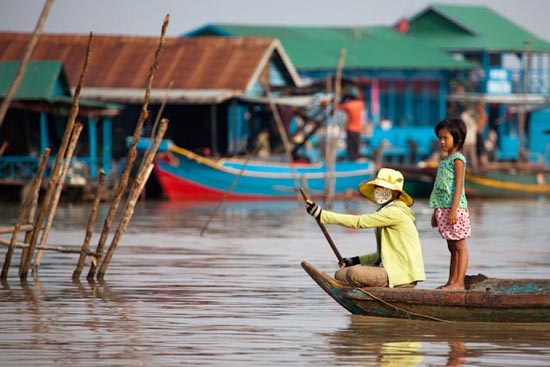
Photographer’s Notes: The children paddle themselves to floating schools in buckets and are called ‘bucket kids’. There’s a floating pig farm, a bar, a bookshop and even a souvenir stall where we cram to bursting point the last spaces in our luggage.
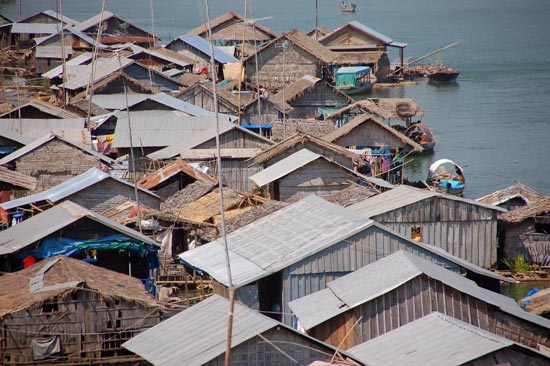
Floating communities such as Kompong Cham are clustered, and neighbours often live in close proximity to each other.
One of the positives that stands out for this lifestyle is the keen sense of community and neighborly love.
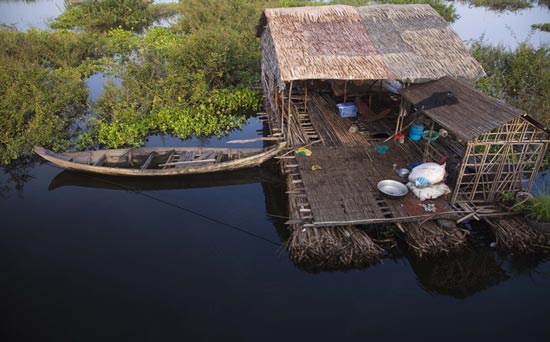
Canoes, boats and sometimes large pans (yes, pans – lo and behold!) are commonly used for transportation in floating villages.
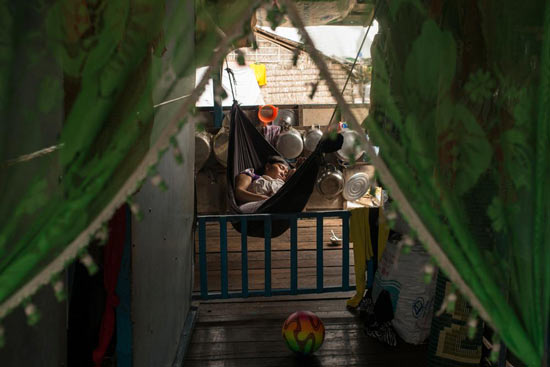
Most of the homes in Cambodia’s and other floating villages typically consist of two small rooms, a kitchen and a latrine that opens into the waters.
While this may make for cozy and efficient living, resulting water contamination is known to cause diseases in the local population.
Solution??
In the Cambodian village of Prek Toal, floating toilets (pictured above) by NGO Wetlands Work use plants to filter and clean human waste.
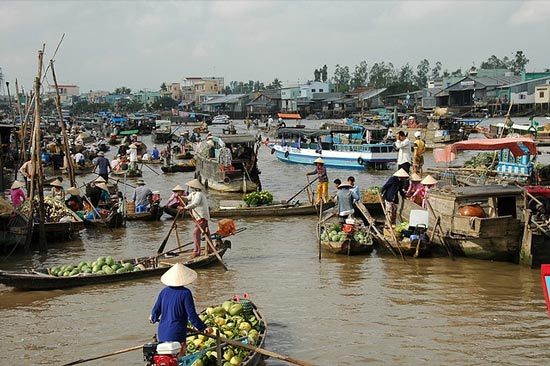
Pictured above is the Mekong River floating market.
Fresh vegetables, fish, flowers and other natural agricultural produce, including cooked food are found in abundance in floating markets. The Mekong is one of the world’s longest rivers… it runs across China, Myanmar, Laos, Thailand, Cambodia and Vietnam.
Sellers and buyers in floating markets are friendly and hospitable.
As you can see, the world is a beautiful place. Life presents us with eye-opening lo and behold moments when we discover lifestyles as fascinating as living on water. We hope that you have enjoyed visiting Cambodia’s floating villages with us at DUNIA Magazine!
Would you visit Cambodia’s floating villages in real-life? Leave a comment.

